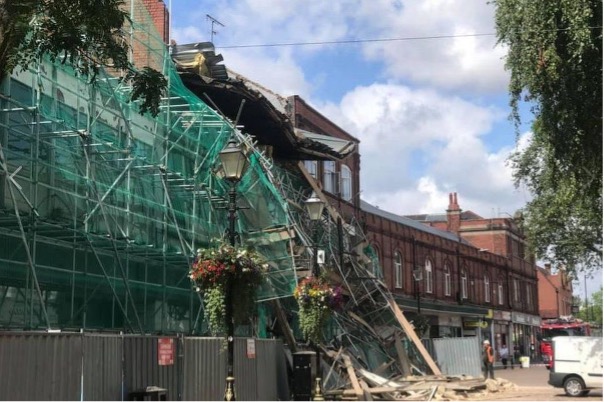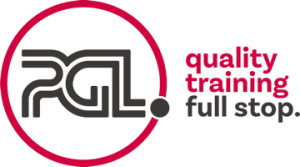Temporary Works – A Brief Introduction
In construction, Temporary Works (TW) provides the necessary support for the creation of permanent structures. These temporary structures, ranging from scaffolding and formwork to excavation support and access systems, play a crucial role in the construction process. To ensure the safety, and overall best practice, the British Standard BS 5975 steps in as a guiding force.
Defining Temporary Works
According to the HSE, they define Temporary works as:
“Temporary works (TW) are the parts of a construction project that are needed to enable the permanent works to be built. Usually the TW are removed after use – eg access scaffolds, props, shoring, excavation support, falsework and formwork, etc. Sometimes the TW is incorporated into the permanent works – eg haul road foundations and crane or piling platforms may be used for hardstanding or road foundations”.
BS 5975:2019 Standards for Temporary Works Management
On the 30th of May 2019, the latest version of BS 5975 (the code of practice for temporary works) was released and it provides a comprehensive framework for the management of temporary works in construction. The standard covers the entire lifecycle of temporary works, from design and installation to inspection, monitoring, and dismantling. The standard has been updated to take account of the Construction (Design and Management) Regulations 2015, particularly in respect of the interface between the design of permanent works and the design of temporary works.
Key Components of BS 5975
BS 5975 on temporary works procedures can be adopted by:Formwork and falsework clients
- Principal contractors and sub-contractors
- Designers of permanent works and/or temporary works
- Suppliers of temporary works equipment
- Specialist consulting engineers
- Construction companies
- Training providers
- Health and safety advisors
- Local authorities, councils, and building control officers
- Educators in universities and colleges
(Not an exhaustive list)
Why should you use BS 5975 – Temporary works procedures?
BS 5975 on temporary works procedures gives recommendations and guidance on the procedural controls to be applied to all aspects of temporary works. It also includes guidance on design, specification, construction, use, and dismantling of falsework and
guidance on permissible stress design of falsework. This guidance also applies to the design of what is termed “class A” falsework in BS EN 12812, the design of which is specifically excluded from BS EN 12812.
Section 1 of BS 5975 gives recommendations in relation to training and education.
Section 2 gives recommendations for the procedures required to ensure that temporary works are conceived, designed, specified, constructed, used, and dismantled in a safe and controlled manner suitable for all construction projects.
BS 5975 recognises that more complex projects require more control measures and that additional client-specific procedures might be required on major infrastructure projects. Section 2 includes clauses on the roles of clients, permanent works designers, and construction management organisations.
Section 3 covers the design of temporary works and in particular the design of falsework and relevant formwork. It also covers:
- Materials including material factors
- Loads and load factors
- Design of falsework, including both proprietary equipment and traditional scaffolding solutions
- Wind loading (a reference to temporary and permanent stability) and reference to other British Standards for the design of structural steelwork, reinforced concrete, and excavation support.
- The structural design element in this standard is additional information necessary for the structural design of falsework. It can be used in conjunction with existing structural standards. Source of text: BSIGroup, 2019
Management of Temporary Works
Effective management of temporary works is imperative and should involve a systematic approach that may include:
- Design and Planning:
- Risk Assessment:
- Installation:
- Inspection and Monitoring:
- Communication and Collaboration:
- Documentation:
- Dismantling:
When designing temporary works, it must be checked for design concept, strength and structural adequacy and compliance with the design brief. The BS splits this up into 4 categories, Cat checks 0, 1, 2 and 3. The checking systems enables correct checks for complexity and scope of the project and who can perform the check.
- CAT 0 Check: This design category only applies to standard solutions and not original designs
- CAT 1 Check: This check is for fairly simple designs and can include formwork, brickwork, falsework; needling and propping. There should be a formal design undertaken and the checker will go through the design and calculations and sign to say they agree with what has been designed
- CAT 2 Check: This check is for more complex or involved designs than those suitable for a CAT 1 check. checker is issued with the design brief, the design methodology and the drawings. They are not issued with the calculations. The checker will do their own independent calculations and is carried out by someone not involved in the original design.
- CAT 3 Check: Highest level check, where complex or innovative designs, and includes works such as basements and tunnels. checker is issued with the design brief, the design methodology and the drawings. They are not issued with the calculations and must be completed by someone outside of the designing organisation for complete ambiguity.
In all cases, and when working with any category of TWs, competent persons must be appointed to the roles of Temporary Works Co-ordinators (TWC) and Temporary Works Supervisors (TWS) to support the overall effective management of TW on site.
A simplified temporary works flowchart has been developed with the support of CITB and a specialist engineering consultancy, the flowchart breaks the project steps down into:
- Role appointment
- Process
- Key TW document
tw_simplified-temporary-works-process-flowchart_v0200.pdf (citb.co.uk)
Source: CITB, 2019
CITB Courses for Temporary Works Supervisors and Coordinators
The Construction Industry Training Board (CITB) offers specialised training courses for individuals involved in the supervision and coordination of temporary works:
1. Temporary Works Supervisor Training (TWS):
- Aimed at individuals who will be working as Temporary Works Supervisors.
- Covers the responsibilities of a TWS, including monitoring, safety, and ensuring compliance with temporary works standards.
2. Temporary Works Coordinator Training (TWC):
- Designed for those taking on the role of a Temporary Works Coordinator.
- Focuses on coordination, communication, and ensuring compliance with temporary works procedures.
These CITB courses are tailored to enhance the competence of individuals engaged in temporary works, providing them with the necessary knowledge and skills to effectively contribute to the safe and efficient management of temporary structures on construction sites.
Our Courses
PGL Midlands offer the following courses – Temporary Works Coordinator, Temporary Works Refresher, Temporary Supervisor, Temporary Works General Awareness and bespoke course options tailored to your own needs. We provide courses at our various locations around the UK and online (Teams/Zoom). Go to our Training Calendar Page to see our upcoming dates: Training Calendar.
To enquire about our courses please call on 0121 240 0375, Email on info@pglmidlands.com or visit our website www.pglmidlands.com
Conclusion
BS 5975, with its comprehensive guidelines, stands as a cornerstone for TW management. By defining clear responsibilities, emphasising safety, and providing a structured approach. The CITB courses complement these standards, equipping supervisors and coordinators with the knowledge needed to navigate the complexities of temporary works, ultimately contributing to the success and safety of construction projects.
Further Reading and Links
- BS 5975:2019 – TC | 31 May 2019 | BSI Knowledge (bsigroup.com)
- Frequently asked questions – Temporary works (hse.gov.uk)
- Home – Temporary Works Forum (twforum.org.uk)
- BRAGG, S.L.(DEPARTMENT OF EMPLOYMENT, DEPARTMENT OF THE ENVIRONMENT), Final Report of the Advisory Committee on Falsework, London, HMSO, June 1975.
Scaffolding collapse in Nuneaton

